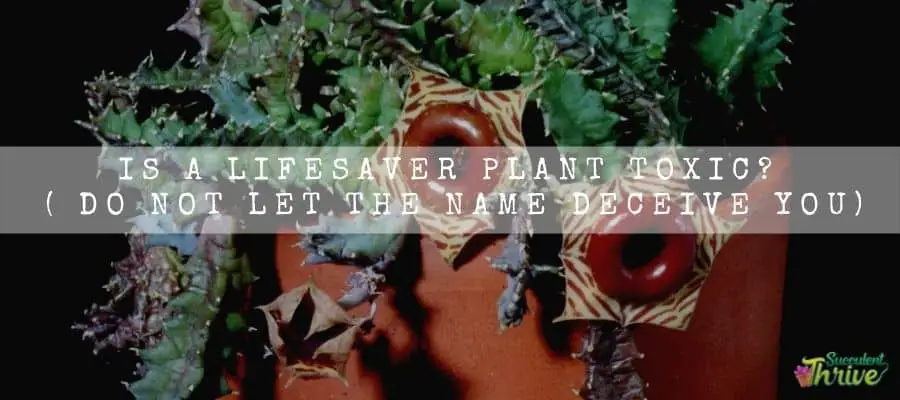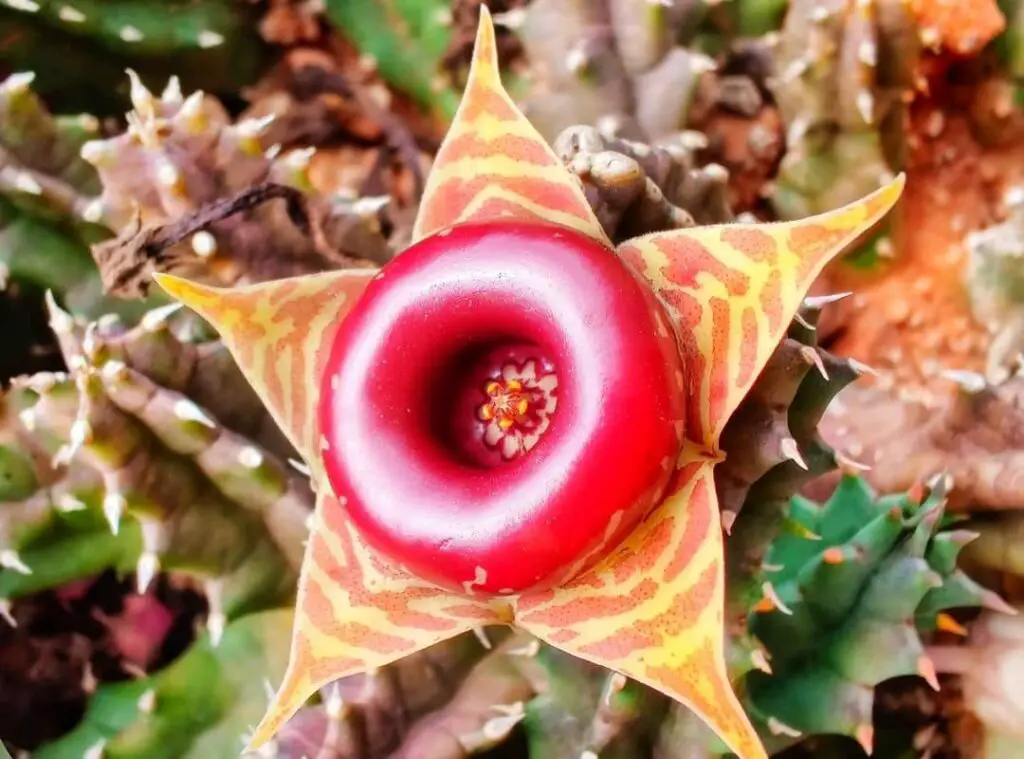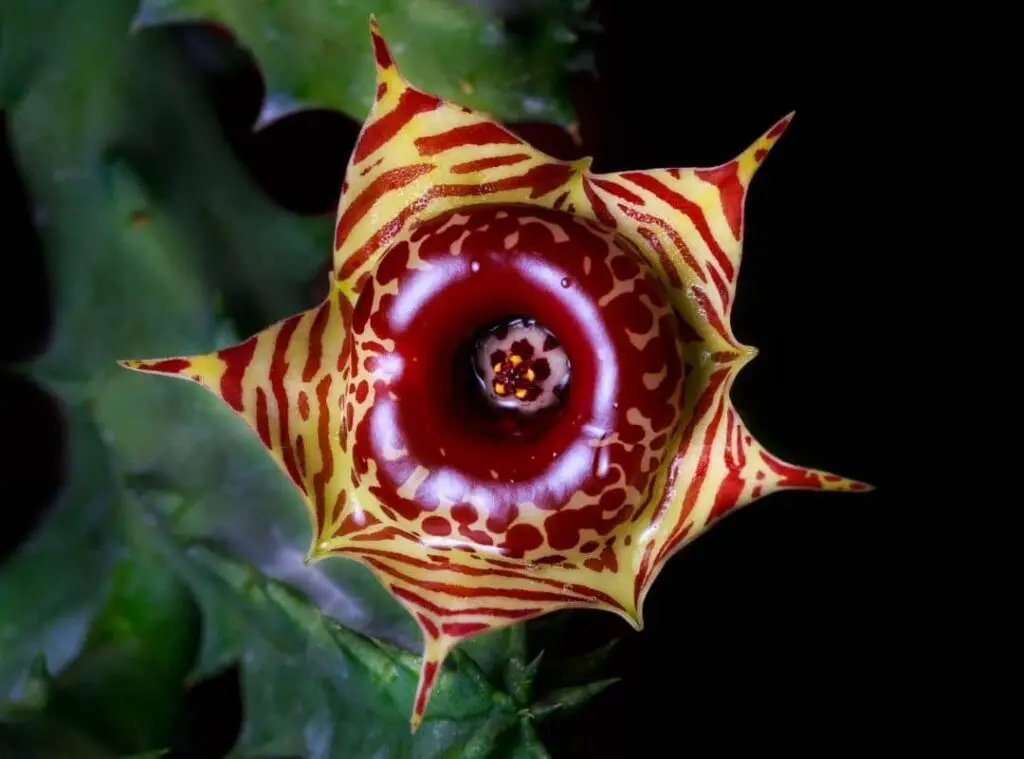Yes, lifesaver plants are toxic in nature for both animals and for humans if you ingest the sap of the life saver plants. In fact, Lifesaver plant toxic sap or latex could be poisonous for humans as well as for pets.
If the plant sap gets in contact with the eyes, it could create so much damage to the eyes. Further if you consume the plant also, it would also be allergic to you.
Hence it is critical that you safeguard yourself before starting interacting with the plants.

About Lifesaver plant
To briefly touch on the Lifesaver plants, they are small perennial succulents which tend to grow in creeping manners. They could thrive well with minimum supervision from you.
You only need to expose them to sufficient sunlight levels, grow them in a well-draining soil mix and water them in a proper manner so that they can grow to their fullest potential.
They produce attractive flowers also. However, Lifesaver plants release an unpleasant fragrance. Having said that, pollinators are attractive towards the flowers of Lifesaver plants.
Which part of the plant is toxic?
- Sap/Juice
- Flowers
- Leaves
- Fruits
- Roots
- Seeds
- Stems
As aforesaid, the entire plant is poisonous, and you need to be mindful when handling the plants.
Ideally you should wear a long-sleeved shirt and rubber gloves, long pants so that your entire body is protected from the toxins of the plants.
Additionally, ensure that you are washing your hands once you finish dealing with the Lifesaver plants.
Why is the lifesaver plant toxic?
Lifesaver plants are toxic due to the sap which is called latex .
They produce a white latex which causes all the allergies. As aforesaid if they get in touch with the eyes and if you consume them, it could create allergies in your skin as well as in your eyes.
Since they are toxic, you need to plant them in a place where your pets or the kids reach them.
Animals affected by lifesaver plant toxic poison
Lifesaver plants are toxic for humans. Moreover, they could be poisonous for cats, dogs and for horses as well.
Is a lifesaver plant toxic to touch?
Lifesaver plants release the toxin when they are cut. Further when you consume the parts of the plants, that could also be poisonous.
The toxin is called the latex, and it is what causes all the trouble. Hence it is crucial that you protect yourself before interacting with the plants. They could create irritations in your eyes and in your skin.
Best is to locate these plants somewhere your pets or kids cannot reach.
However, when you have to attend to the plant’s maintenance requirements you need to wear all the protective gears and then attend to it so that you will be protected from the toxic sap.

Symptoms of lifesaver plant poisoning
If the toxic sap gets in contact with your skin, it will create irritations in the skin. The severity of the poisoning could vary.
Further, if the toxic sap reaches the eye, it will contribute to injuries in the eyes. It could be so risky to the level that it could make you temporarily blind.
- Loss in sensitivity
- Redness in the eyes
- Swollen eyelids
- Issues with vision
- Bleeding in the eye.
Once the sap contacts your skin, it would cause redness in the skin. Further, it would give you a burning feeling as well.
Further once you ingest it, it could burn your lips, tongue as well as your mouth. In addition to that, you will start vomiting and will feel pains in your stomachs.
Whenever you come across such a situation, you need to immediately treat it unless it could create further repercussions. I recommend consulting a doctor whenever you encounter such a situation.
How to confirm the lifesaver plant poisoning
If you could spot any redness, swelling and burning feeling in the skin it could be due to poisoning of the lifesaver plants.
Your skin would start to become red and it may further come up with blistering as well. In addition to that it could result in rash as well.
This is something which you could spot between humans and pets in common due to lifesaver plant poisoning. Further in case the toxin touches your eyes, it would lead to redness and swelling in your eye lids etc.
Chances are that it could make you blind as well. (Hope this is correct). If you ingest the plants, you will start to vomit and may even get diarrhea as well.
Treatments for lifesaver plant poisoning
I encourage you to consult a doctor immediately whenever you encounter poisoning of a lifesaver plant.
First aid
If the lifesaver plant sap reaches your eye, it would cause blindness. Hence it is very vital that you attend to it at the very moment you come across such poisoning.
However, the first thing you need to do is to rinse off the affected eye for about 15 minutes. However, when rising off your eye, ensure that the washed water does not reach any unaffected area of the skin.
If the plant’s sap has caused poisoning in your skin, you need to wash the affected area with chill water.
Here also, you should be mindful not to spread the washed away water to reach any unaffected area of your body.
Taking a warm bath is strictly prohibited once you contact the life saver plant sap. If you do so, it will only help the plant sap to spread more.
If your pets have consumed the plant parts, you need to first check whether they are still carrying any remaining of the plant in the mouth, if so immediately remove them and wash away the mouth.
At hospital
Once you take the pets to the hospital, vet doctors will use a solution to wash their affected area of the body.

Is the lifesaver plant toxic to humans?
Lifesaver plants are toxic for humans. As aforesaid the sap these plants produce could be poisonous for humans. Once the plant is cut, you could spot them releasing the toxic sap.
Hence, it is best to take the necessary precautions when interacting with the plants.
It could badly impact your skin as well as on your eyes. Further, if you ingest the lifesaver plant parts, it will result in gastrointestinal issues and pains in the stomach as well.
In addition to that you may also suffer from diarrhea as well. Hence why it is crucial to keep these plants away from potential victims such as from your kids and from pets.
Precautions you can take
Ensure that you do not leave your kids and pets unattended with the plants. Ideally you could place them in a spot where your kids and pets cannot reach.
Avoid growing them in your yard. However, if you still want to add them in your garden, consider placing barriers or fences in close proximity to the plants.
Most importantly, make sure that you are wearing all the protective wear such as rubber gloves, long pants, long sleeved shirts , eye protection etc.
Ensure that your garment material is thick so that the plant sap cannot reach your skin through that.
When you complete the plant’s maintenance work, you need to have a proper wash and keep the clothing away from the kids and your pets.
Hope you found this article useful and you are now well aware of the toxicity of the life saver plants. Further ensure that you practice the aforesaid orecuayios when growing the lidesever plants.
Read Next : Is Coral Cactus Toxic? 9 Important Facts You Must Know Is Panda Plant Toxic? | 10 Shocking Facts You Should Know | Is Donkey Tail Plant Poisonous? (No But Some Family Members Are)
